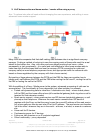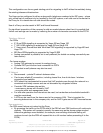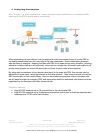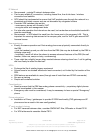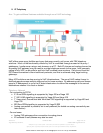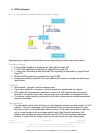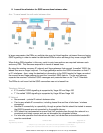Version 2.1 16 March 2006 Page 15 of 33
Vega Gateway Scenarios. ©2005-2006 VegaStream Ltd.
Examples are given in best faith – ensure that you check the capabilities of systems before
deploying them, especially the functionality of devices not designed and delivered by VegaStream.
IP Network
•
Recommend – private IP network between sites
• Can be any reliable IP connection, including leased line, line of site laser / wireless
connection and satellite
• QOS should be implemented to ensure that VoIP packets pass through the network in a
consistent and timely manner and are not discarded by congested routers
•
Consider VPN between sites as this:
- removes any issues with firewalls / NAT
- encrypts audio and management data
• A VPN can be used from the home user to the company LAN. This is important for
securing data access to the company site, and for VoIP it gets around NAT traversal issues
User experience
• The user experience will be completely controlled by the SIP proxy / H.323 gatekeeper.
Choice of the correct application server device will be key to successful delivery of service.
USPs
• Vega gateways are very good at interoperating with 3
rd
party VoIP devices.
•
Features available that are not available on traditional telephony
Considerations
• Check that the data network is capable of supporting VoIP (QoS / bandwidth)
• Where a media server is used, consider placing it close to where the media is going to be
used – this minimises the distance over which ‘fat data pipes’ are needed to route audio
traffic.
Future extensions
•
Connection to an ITSP for cheaper off-net calls – and possibly for more flexible ingress of
national, international or non-geographic numbers.
3
rd
party product choices
• PBX: Snom
• Intelligent Call Routing: Rostrvm, Teleware, Alceo, Interactive intelligence
VoIPon Solutions www.voipon.co.uk sales@voipon.co.uk Tel: +44 (0) 1245 600560




